Union Minister for Agriculture, Livestock and Irrigation U Min Naung visited the vineyards in YwarTan village-tract on Yamethin Township in Mandalay Region on Sunday. During the meeting with farmers, the Union Minister urged them to cultivate grape not only for consuming but also for wine producing.
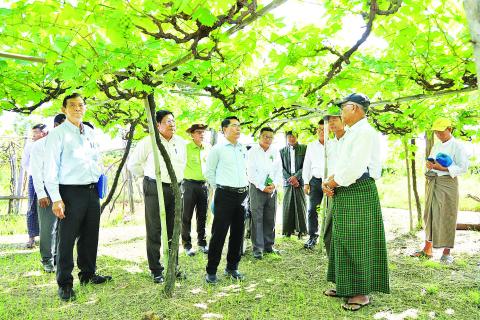
Union Minister for Agriculture, Livestock and Irrigation U Min Naung visited the vineyards in YwarTan village-tract on Yamethin Township in Mandalay Region on Sunday. During the meeting with farmers, the Union Minister urged them to cultivate grape not only for consuming but also for wine producing.
He also outlined the implementation of contract farming system through collaboration between farmers and wine entrepreneurs for wider market opportunities. The Union Minister stressed the need to strive for cultivation of targeted cotton acres in Yamethin area, ensuring the expected yield.
Then, the Directors General presented the technical issues to be abided by the respective sectors and the Union Minister coordinated the needs. Later, the Union Minister arrived at LePhyu Dam where he instructed for implementation of dredging works with the use of regional government fund and arrangement for construction new dam if needed. He also observed the water inflow of KyeeNiKan and supplying irrigated water to the catchment area.
mitv
Union Minister for Agriculture, Livestock and Irrigation U Min Naung visited the vineyards in YwarTan village-tract on Yamethin Township in Mandalay Region on Sunday. During the meeting with farmers, the Union Minister urged them to cultivate grape not only for consuming but also for wine producing.
He also outlined the implementation of contract farming system through collaboration between farmers and wine entrepreneurs for wider market opportunities. The Union Minister stressed the need to strive for cultivation of targeted cotton acres in Yamethin area, ensuring the expected yield.
Then, the Directors General presented the technical issues to be abided by the respective sectors and the Union Minister coordinated the needs. Later, the Union Minister arrived at LePhyu Dam where he instructed for implementation of dredging works with the use of regional government fund and arrangement for construction new dam if needed. He also observed the water inflow of KyeeNiKan and supplying irrigated water to the catchment area.
mitv
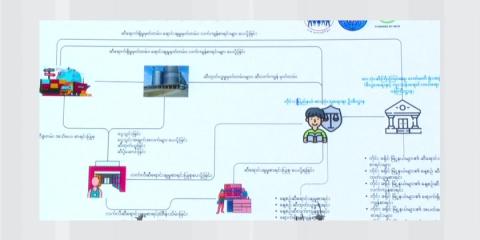
A Launching Ceremony for the Digital Platform-based Edible Oil Distribution System was held at the conference hall of the Ministry of Commerce in Nay Pyi Taw on August 7, to ensure that the edible oil transported from the Yangon palm oil storage tank to regions and states, including the Naypyidaw Union Territory, to arrive with the specified quality and quantity within the set timeframe and to supervise the edible oil distribution process.
A Launching Ceremony for the Digital Platform-based Edible Oil Distribution System was held at the conference hall of the Ministry of Commerce in Nay Pyi Taw on August 7, to ensure that the edible oil transported from the Yangon palm oil storage tank to regions and states, including the Naypyidaw Union Territory, to arrive with the specified quality and quantity within the set timeframe and to supervise the edible oil distribution process.
The Union Minister for Commerce U Chit Swe, attended and delivered a speech. In his speech, Union Minister U Chit Swe stated that the new digital platform-based edible oil distribution system must be used for supervision. He emphasized the need to successfully implement the system down to the retail level in the Nay Pyi Taw Union Territory and then extend it to other regions and states.
Following this, the Director-General of the Department of Consumer Affairs explained the reasons for implementing the new system, while the Chairman of the Myanmar Edible Oil Dealers and Manufacturers Association presented on the status of their collaborative efforts.
Afterwards, the Union Minister, Deputy Ministers, Joint Secretary of the Central Committee on Ensuring Smooth Flow of Trade and Goods, and a member of the Nay Pyi Taw Council officially opened the ceremony by cutting the ribbon. During the event, a representative from the technology company Capital Connect Limited gave a video presentation on the Edible Oil System for supervising distribution.
A representative from Taw Win Ekarit Company then explained the condition to monitor edible oil transportation in real time by using GPS and CCTV. Attendees were able to ask questions and discuss their queries.
mitv
A Launching Ceremony for the Digital Platform-based Edible Oil Distribution System was held at the conference hall of the Ministry of Commerce in Nay Pyi Taw on August 7, to ensure that the edible oil transported from the Yangon palm oil storage tank to regions and states, including the Naypyidaw Union Territory, to arrive with the specified quality and quantity within the set timeframe and to supervise the edible oil distribution process.
The Union Minister for Commerce U Chit Swe, attended and delivered a speech. In his speech, Union Minister U Chit Swe stated that the new digital platform-based edible oil distribution system must be used for supervision. He emphasized the need to successfully implement the system down to the retail level in the Nay Pyi Taw Union Territory and then extend it to other regions and states.
Following this, the Director-General of the Department of Consumer Affairs explained the reasons for implementing the new system, while the Chairman of the Myanmar Edible Oil Dealers and Manufacturers Association presented on the status of their collaborative efforts.
Afterwards, the Union Minister, Deputy Ministers, Joint Secretary of the Central Committee on Ensuring Smooth Flow of Trade and Goods, and a member of the Nay Pyi Taw Council officially opened the ceremony by cutting the ribbon. During the event, a representative from the technology company Capital Connect Limited gave a video presentation on the Edible Oil System for supervising distribution.
A representative from Taw Win Ekarit Company then explained the condition to monitor edible oil transportation in real time by using GPS and CCTV. Attendees were able to ask questions and discuss their queries.
mitv
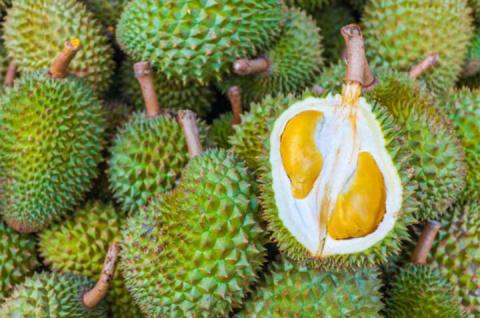
Myanmar Fruit, Flower and Vegetable Producers and Exporters Association (MFVP) set up the Myanmar Durian Growers and Exporters Group (Ayeyawady Region) at the Agriculture Department in Pathein city on 2 August.
A group of durian growers from Thapaung, Pathein, Nyaungdon, Maubin, Latputta, Pantanaw and Myaungmya townships in Ayeyawady Region attended the event. Myanmar Durian Growers and Exporters Group (Ayeyawady Region) comprises 21 central executives and working executives.
Myanmar Fruit, Flower and Vegetable Producers and Exporters Association (MFVP) set up the Myanmar Durian Growers and Exporters Group (Ayeyawady Region) at the Agriculture Department in Pathein city on 2 August.
A group of durian growers from Thapaung, Pathein, Nyaungdon, Maubin, Latputta, Pantanaw and Myaungmya townships in Ayeyawady Region attended the event. Myanmar Durian Growers and Exporters Group (Ayeyawady Region) comprises 21 central executives and working executives.
It is the fifth group of Myanmar Durian Growers and Exporters organized so far. The respective groups have been formed in Yangon and Bagan and Mon, and Kayin states. — NN/KK
Myanmar Fruit, Flower and Vegetable Producers and Exporters Association (MFVP) set up the Myanmar Durian Growers and Exporters Group (Ayeyawady Region) at the Agriculture Department in Pathein city on 2 August.
A group of durian growers from Thapaung, Pathein, Nyaungdon, Maubin, Latputta, Pantanaw and Myaungmya townships in Ayeyawady Region attended the event. Myanmar Durian Growers and Exporters Group (Ayeyawady Region) comprises 21 central executives and working executives.
It is the fifth group of Myanmar Durian Growers and Exporters organized so far. The respective groups have been formed in Yangon and Bagan and Mon, and Kayin states. — NN/KK

Myanmar’s areca nut export to India showed a substantial increase in the 2024-2025 financial year (April-March), according to the Economic Attaché in Kolkata, citing a report by The Hindu Business Line.
According to the statistics provided by the lower House of India’s Parliament, the value of areca nut exports to India by Myanmar and Bangladesh surged last FY. Jitin Prasada, Union Minister of State for the Ministry of Commerce and Industry, submitted a letter describing the areca nut import between 2021-2022 FY and 2024-2025 FY to the parliament.
Myanmar’s areca nut export to India showed a substantial increase in the 2024-2025 financial year (April-March), according to the Economic Attaché in Kolkata, citing a report by The Hindu Business Line.
According to the statistics provided by the lower House of India’s Parliament, the value of areca nut exports to India by Myanmar and Bangladesh surged last FY. Jitin Prasada, Union Minister of State for the Ministry of Commerce and Industry, submitted a letter describing the areca nut import between 2021-2022 FY and 2024-2025 FY to the parliament.
India’s area nut imports from Myanmar hit US$15.6 million in FY 2023-2024, and the import value edged up to $33.2 million in FY 2024-2025.
Similarly, the value of areca nut imports from Bangladesh also went up to $53.06 million in FY 2024-2025 from $13.29 million in FY 2023-2024.
India’s areca nut import amounted to $143.45 million in FY 2024-2025, $147.99 million in FY 2023-2024 FY and $90.18 million in FY 2021-2022.
Chinese demand for Myanmar’s soft, fresh and moist areca nuts is on an upward trajectory. Myanmar’s areca nut market has become widespread. There is competitive pricing in the market. The conical-shaped nuts, rather than round ones, are mostly traded. After baking the soft areca nuts with heat, they are exported to China. Areca nut is one of the core components in betel chewing practice locally, along with other ingredients like betel leaves, slaked lime and tobacco. — NN/KK
Myanmar’s areca nut export to India showed a substantial increase in the 2024-2025 financial year (April-March), according to the Economic Attaché in Kolkata, citing a report by The Hindu Business Line.
According to the statistics provided by the lower House of India’s Parliament, the value of areca nut exports to India by Myanmar and Bangladesh surged last FY. Jitin Prasada, Union Minister of State for the Ministry of Commerce and Industry, submitted a letter describing the areca nut import between 2021-2022 FY and 2024-2025 FY to the parliament.
India’s area nut imports from Myanmar hit US$15.6 million in FY 2023-2024, and the import value edged up to $33.2 million in FY 2024-2025.
Similarly, the value of areca nut imports from Bangladesh also went up to $53.06 million in FY 2024-2025 from $13.29 million in FY 2023-2024.
India’s areca nut import amounted to $143.45 million in FY 2024-2025, $147.99 million in FY 2023-2024 FY and $90.18 million in FY 2021-2022.
Chinese demand for Myanmar’s soft, fresh and moist areca nuts is on an upward trajectory. Myanmar’s areca nut market has become widespread. There is competitive pricing in the market. The conical-shaped nuts, rather than round ones, are mostly traded. After baking the soft areca nuts with heat, they are exported to China. Areca nut is one of the core components in betel chewing practice locally, along with other ingredients like betel leaves, slaked lime and tobacco. — NN/KK
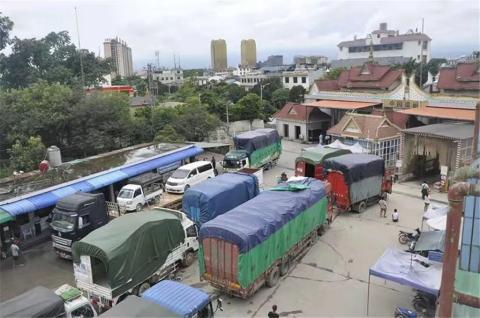
The Sanitary and Phytosanitary Protocol (SPS Protocol) workshop was held at the end of July at the Mingala Hall of the Union of Myanmar Federation of Chambers of Commerce and Industry (UMFCCI).
The SPS protocol is a must for legitimate rice export to China. The SPS Protocol measures include all relevant laws, decrees, regulations, requirements and procedures.
The Sanitary and Phytosanitary Protocol (SPS Protocol) workshop was held at the end of July at the Mingala Hall of the Union of Myanmar Federation of Chambers of Commerce and Industry (UMFCCI).
The SPS protocol is a must for legitimate rice export to China. The SPS Protocol measures include all relevant laws, decrees, regulations, requirements and procedures.
Officials of Agriculture Department and Consumer Affairs Department, representatives of Myanmar Inspection and Testing Services Limited, chair of Myanmar Rice Federation (MRF) and rice exporting companies attended the workshop, emphasizing SPS Protocol procedures, registration with The General Administration of Customs of the People’s Republic of China, online registration process for legal rice export, and potential markets in Europe, Africa and Asia beyond China.
Representatives of the companies elaborated a purchasing plan, an export plan, repatriation of export revenues and registration on MyRO. Officials concerned coordinated the matters discussed by the companies. — NN/KK
The Sanitary and Phytosanitary Protocol (SPS Protocol) workshop was held at the end of July at the Mingala Hall of the Union of Myanmar Federation of Chambers of Commerce and Industry (UMFCCI).
The SPS protocol is a must for legitimate rice export to China. The SPS Protocol measures include all relevant laws, decrees, regulations, requirements and procedures.
Officials of Agriculture Department and Consumer Affairs Department, representatives of Myanmar Inspection and Testing Services Limited, chair of Myanmar Rice Federation (MRF) and rice exporting companies attended the workshop, emphasizing SPS Protocol procedures, registration with The General Administration of Customs of the People’s Republic of China, online registration process for legal rice export, and potential markets in Europe, Africa and Asia beyond China.
Representatives of the companies elaborated a purchasing plan, an export plan, repatriation of export revenues and registration on MyRO. Officials concerned coordinated the matters discussed by the companies. — NN/KK
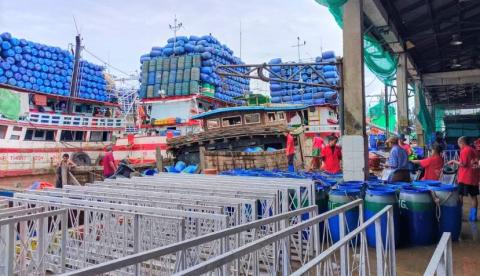
In the first week of August, the fishing boats carrying various fish from the sea enter the Yangon jetties and the products are stored at the cold storage facilities for foreign export.
There are over 500 fishing boats in Yangon, and over 350 capture fish and prawns in the sea. The fishing boats sheltered for one week at the islands while the sea got rough during the stormy period. The fish and prawn captured from 28 July to date arrive at 10 jetties in Yangon.
In the first week of August, the fishing boats carrying various fish from the sea enter the Yangon jetties and the products are stored at the cold storage facilities for foreign export.
There are over 500 fishing boats in Yangon, and over 350 capture fish and prawns in the sea. The fishing boats sheltered for one week at the islands while the sea got rough during the stormy period. The fish and prawn captured from 28 July to date arrive at 10 jetties in Yangon.
“Currently, there are over 350 fishing boats from Yangon in the sea, and they return to normal condition. The fishing boats enter the jetty daily. The consumption of freshwater for the entry of saltwater products is a supportive action for the local marine product security. Then, it earns foreign income from the foreign export sector,” said U Tin Tun, staff officer of Yangon VMS Sub-Control Centre.
The saltwater products arriving in Yangon are entering cold storage facilities as foreign exports and are being sent to Shaw Padauk and Kyimyindine fish markets for local consumption.
“Due to the arrival of large offshore fishing vessels in the first week of this month, the supply of marine products has resumed as usual. Even today, vessels are continuing to arrive, and tomorrow, large fishing trawlers carrying various kinds of fish are expected to arrive. In addition to domestic consumption, some of the fish are for export, so they will be transported to cold storage factories and exported overseas. When marine products begin to enter the market, the prices of freshwater fish, which are currently high, usually decline. The entry of export-class products is beneficial both to the country by earning foreign income and to business owners,” said Daw Tin Nwe, entrepreneur at Kyimyindine MNG jetty. — Thitsa (MNA)/KTZH
In the first week of August, the fishing boats carrying various fish from the sea enter the Yangon jetties and the products are stored at the cold storage facilities for foreign export.
There are over 500 fishing boats in Yangon, and over 350 capture fish and prawns in the sea. The fishing boats sheltered for one week at the islands while the sea got rough during the stormy period. The fish and prawn captured from 28 July to date arrive at 10 jetties in Yangon.
“Currently, there are over 350 fishing boats from Yangon in the sea, and they return to normal condition. The fishing boats enter the jetty daily. The consumption of freshwater for the entry of saltwater products is a supportive action for the local marine product security. Then, it earns foreign income from the foreign export sector,” said U Tin Tun, staff officer of Yangon VMS Sub-Control Centre.
The saltwater products arriving in Yangon are entering cold storage facilities as foreign exports and are being sent to Shaw Padauk and Kyimyindine fish markets for local consumption.
“Due to the arrival of large offshore fishing vessels in the first week of this month, the supply of marine products has resumed as usual. Even today, vessels are continuing to arrive, and tomorrow, large fishing trawlers carrying various kinds of fish are expected to arrive. In addition to domestic consumption, some of the fish are for export, so they will be transported to cold storage factories and exported overseas. When marine products begin to enter the market, the prices of freshwater fish, which are currently high, usually decline. The entry of export-class products is beneficial both to the country by earning foreign income and to business owners,” said Daw Tin Nwe, entrepreneur at Kyimyindine MNG jetty. — Thitsa (MNA)/KTZH
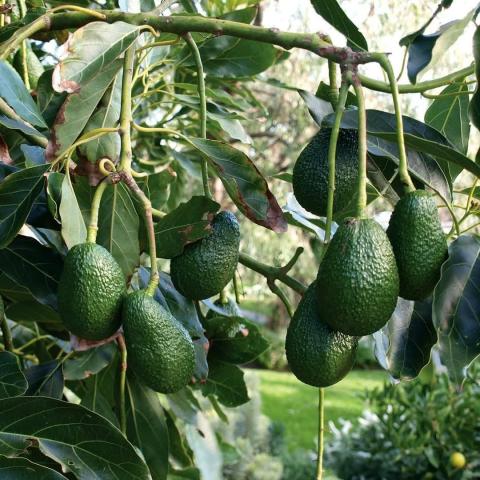
The head of the Shan State Department of Agriculture also detailed Myanmar’s annual avocado exports, import requirements of key potential markets including China, India, Russia, and Middle East countries, as well as the quality standards Myanmar avocados must meet to align with European benchmarks.
The head of the Shan State Department of Agriculture also detailed Myanmar’s annual avocado exports, import requirements of key potential markets including China, India, Russia, and Middle East countries, as well as the quality standards Myanmar avocados must meet to align with European benchmarks.
The Myanmar Fruits, Flower and Vegetable Producer and Exporter Association (MFVP) stated that all stakeholders in the supply chain need to exert the concerted efforts for avocado export designated to China in October.
On 19 July 2025, the Agriculture Department (southern Shan State) held a workshop for growers on raising awareness of Customs inspection and safety regulations of the General Administration of Customs of the People’s Republic of China (GACC), in cooperation with the Myanmar Avocado Producer and Exporter Association (MAVO).
Farm owners need to cooperate in testing six common insects to export avocados to China, said U Kyaw Soe, secretary of the MAVO.
MAVO’s chair set up a farmer public company, eyeing Singapore, Malaysia and Thailand for avocado export this season. The association will help expedite imports of agricultural inputs such as fertilizer and pesticide, along with member growers.
The head of the Shan State Department of Agriculture also elaborated on annual avocado export, avocado import conditions of potential markets such as China, India, Russia and Middle East countries and Myanmar avocado quality requirements in line with the European Standard.
U Ye Lin Oo, a grower, also discussed plant nutrient management in the presence of growers and business entities. Farm owners also vowed to boost exports. — NN/KK
GNLM
The head of the Shan State Department of Agriculture also detailed Myanmar’s annual avocado exports, import requirements of key potential markets including China, India, Russia, and Middle East countries, as well as the quality standards Myanmar avocados must meet to align with European benchmarks.
The Myanmar Fruits, Flower and Vegetable Producer and Exporter Association (MFVP) stated that all stakeholders in the supply chain need to exert the concerted efforts for avocado export designated to China in October.
On 19 July 2025, the Agriculture Department (southern Shan State) held a workshop for growers on raising awareness of Customs inspection and safety regulations of the General Administration of Customs of the People’s Republic of China (GACC), in cooperation with the Myanmar Avocado Producer and Exporter Association (MAVO).
Farm owners need to cooperate in testing six common insects to export avocados to China, said U Kyaw Soe, secretary of the MAVO.
MAVO’s chair set up a farmer public company, eyeing Singapore, Malaysia and Thailand for avocado export this season. The association will help expedite imports of agricultural inputs such as fertilizer and pesticide, along with member growers.
The head of the Shan State Department of Agriculture also elaborated on annual avocado export, avocado import conditions of potential markets such as China, India, Russia and Middle East countries and Myanmar avocado quality requirements in line with the European Standard.
U Ye Lin Oo, a grower, also discussed plant nutrient management in the presence of growers and business entities. Farm owners also vowed to boost exports. — NN/KK
GNLM
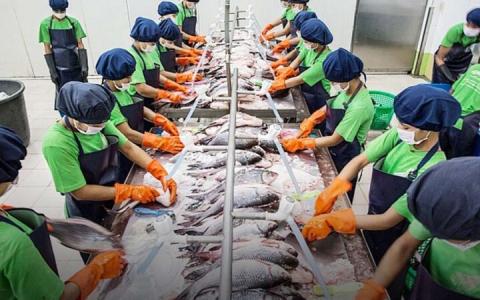
Department of Fisheries aims to export over 530,000 tonnes of fishery products in the current financial year 2025-2026 and expects to attain US$750 million.
Myanmar conveyed 82,773 tonnes of fishery products in the first quarter (April-June), bagging $119.6 million.
Myanmar is endeavouring to accelerate the productivity of agriculture and livestock sectors, contributing to self-sufficiency and exports. Myanmar conveyed over 550,000 tonnes of fisheries worth $722 million to external markets in the past FY 2024-2025.
Department of Fisheries aims to export over 530,000 tonnes of fishery products in the current financial year 2025-2026 and expects to attain US$750 million.
Myanmar conveyed 82,773 tonnes of fishery products in the first quarter (April-June), bagging $119.6 million.
Myanmar is endeavouring to accelerate the productivity of agriculture and livestock sectors, contributing to self-sufficiency and exports. Myanmar conveyed over 550,000 tonnes of fisheries worth $722 million to external markets in the past FY 2024-2025.
Myanmar steadily exports seafood to 40 countries, including China, Thailand, Bangladesh and Japan, through maritime and border trade channels. Myanmar Fisheries Federation and Fisheries Department joined hands to bolster fisheries exports.
More than 20 fish species, including hilsa, rohu, catfish, and seabass, are conveyed to foreign markets, according to Myanmar Fisheries Federation. There are over 140 fishery cold storage facilities, and the department is granting annual licence renewals. — NN/KK
GNLM
Department of Fisheries aims to export over 530,000 tonnes of fishery products in the current financial year 2025-2026 and expects to attain US$750 million.
Myanmar conveyed 82,773 tonnes of fishery products in the first quarter (April-June), bagging $119.6 million.
Myanmar is endeavouring to accelerate the productivity of agriculture and livestock sectors, contributing to self-sufficiency and exports. Myanmar conveyed over 550,000 tonnes of fisheries worth $722 million to external markets in the past FY 2024-2025.
Myanmar steadily exports seafood to 40 countries, including China, Thailand, Bangladesh and Japan, through maritime and border trade channels. Myanmar Fisheries Federation and Fisheries Department joined hands to bolster fisheries exports.
More than 20 fish species, including hilsa, rohu, catfish, and seabass, are conveyed to foreign markets, according to Myanmar Fisheries Federation. There are over 140 fishery cold storage facilities, and the department is granting annual licence renewals. — NN/KK
GNLM

These days, real estate vlogs have become popular and are attracting much attention, according to sources in the real estate industry.
Rather than an ordinary selling method, vlogging can draw many audiences on online platforms.
“Recently, estate agents have sold properties by making vlogs, especially on TikTok, one of the most used online platforms. Real estate vlogs can give detailed presentations so they can draw viewers,” said an estate agent, Ma Swe Swe.
Some agents make vlogs themselves, and some hire professional vloggers.
These days, real estate vlogs have become popular and are attracting much attention, according to sources in the real estate industry.
Rather than an ordinary selling method, vlogging can draw many audiences on online platforms.
“Recently, estate agents have sold properties by making vlogs, especially on TikTok, one of the most used online platforms. Real estate vlogs can give detailed presentations so they can draw viewers,” said an estate agent, Ma Swe Swe.
Some agents make vlogs themselves, and some hire professional vloggers.
During this Vassa, both buying and selling and renting haven’t stopped, and there are still buyers and tenants who need to find a place to live.
With increased migrants, Yangon’s property market, both buying and selling and renting, has remained on the rise. — MT/ZS/Ed
GNLM
These days, real estate vlogs have become popular and are attracting much attention, according to sources in the real estate industry.
Rather than an ordinary selling method, vlogging can draw many audiences on online platforms.
“Recently, estate agents have sold properties by making vlogs, especially on TikTok, one of the most used online platforms. Real estate vlogs can give detailed presentations so they can draw viewers,” said an estate agent, Ma Swe Swe.
Some agents make vlogs themselves, and some hire professional vloggers.
During this Vassa, both buying and selling and renting haven’t stopped, and there are still buyers and tenants who need to find a place to live.
With increased migrants, Yangon’s property market, both buying and selling and renting, has remained on the rise. — MT/ZS/Ed
GNLM
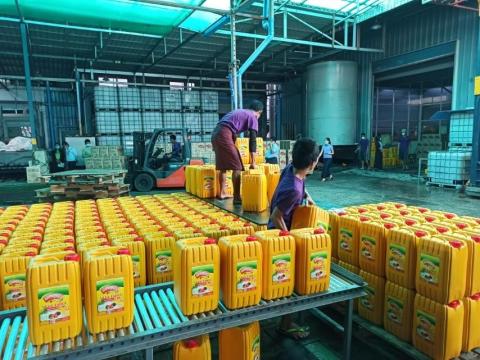
The wholesale reference rate of palm oil set for the Yangon market was set a bit higher at K6,055 this week ending 27 July from K6,030 per viss for a week ending 20 July, according to the Supervisory Committee on Edible Oil Import and Distribution.
The Supervisory Committee on Edible Oil Import and Distribution under the Ministry of Commerce has been closely observing the FOB prices in Malaysia and Indonesia, adding transport costs, tariffs and banking services to decide the wholesale market reference rate for edible oil weekly.
The wholesale reference rate of palm oil set for the Yangon market was set a bit higher at K6,055 this week ending 27 July from K6,030 per viss for a week ending 20 July, according to the Supervisory Committee on Edible Oil Import and Distribution.
The Supervisory Committee on Edible Oil Import and Distribution under the Ministry of Commerce has been closely observing the FOB prices in Malaysia and Indonesia, adding transport costs, tariffs and banking services to decide the wholesale market reference rate for edible oil weekly.
Despite the reference price, the market price is way too high. To control overcharging, the Consumer Affairs Department under the Ministry of Commerce informed consumers of lodging complaints for overcharging through the call centre hotline in late August. The department urges consumers not to buy palm oil at high prices.
The Committee notified that any person who is involved in price gouging and oil storage to attempt market manipulation will face legal action under the Essential Goods and Services Law.
The department is working together with the Myanmar Oil Dealers’ Association and the cooking oil importing companies to offer affordable rates of imported palm oil for consumers.
The complaints for overcharging can be lodged over hotline 1535 of the call centre of the Consumers Affairs Department or sent to the Facebook page of the department and the region and state departments concerned.
The domestic consumption of palm oil is estimated at one million tonnes per year. The local palm oil production is just about 400,000 tonnes. About 700,000 tonnes of palm oil are yearly imported through Malaysia and Indonesia to meet domestic demands. — NN/KK
GNLM
The wholesale reference rate of palm oil set for the Yangon market was set a bit higher at K6,055 this week ending 27 July from K6,030 per viss for a week ending 20 July, according to the Supervisory Committee on Edible Oil Import and Distribution.
The Supervisory Committee on Edible Oil Import and Distribution under the Ministry of Commerce has been closely observing the FOB prices in Malaysia and Indonesia, adding transport costs, tariffs and banking services to decide the wholesale market reference rate for edible oil weekly.
Despite the reference price, the market price is way too high. To control overcharging, the Consumer Affairs Department under the Ministry of Commerce informed consumers of lodging complaints for overcharging through the call centre hotline in late August. The department urges consumers not to buy palm oil at high prices.
The Committee notified that any person who is involved in price gouging and oil storage to attempt market manipulation will face legal action under the Essential Goods and Services Law.
The department is working together with the Myanmar Oil Dealers’ Association and the cooking oil importing companies to offer affordable rates of imported palm oil for consumers.
The complaints for overcharging can be lodged over hotline 1535 of the call centre of the Consumers Affairs Department or sent to the Facebook page of the department and the region and state departments concerned.
The domestic consumption of palm oil is estimated at one million tonnes per year. The local palm oil production is just about 400,000 tonnes. About 700,000 tonnes of palm oil are yearly imported through Malaysia and Indonesia to meet domestic demands. — NN/KK
GNLM

